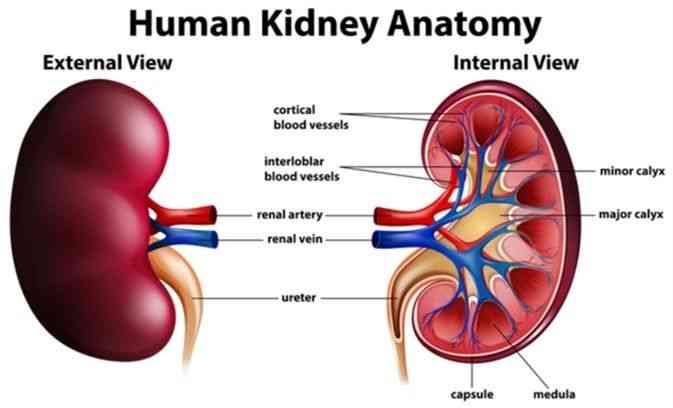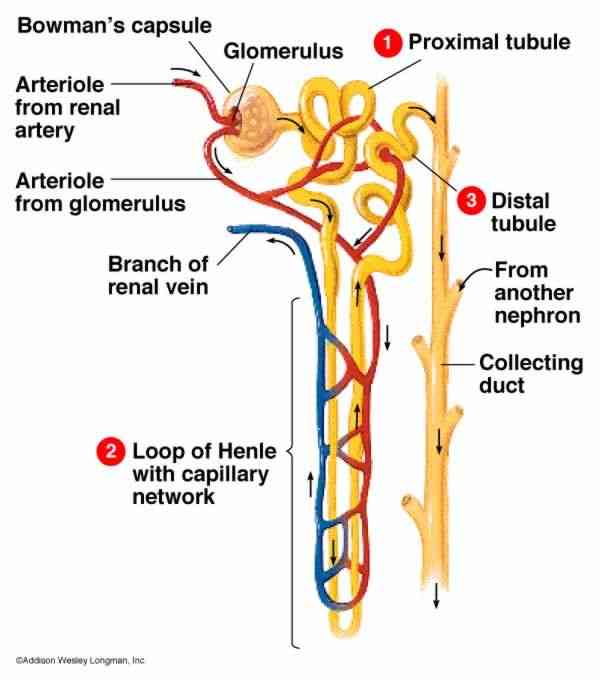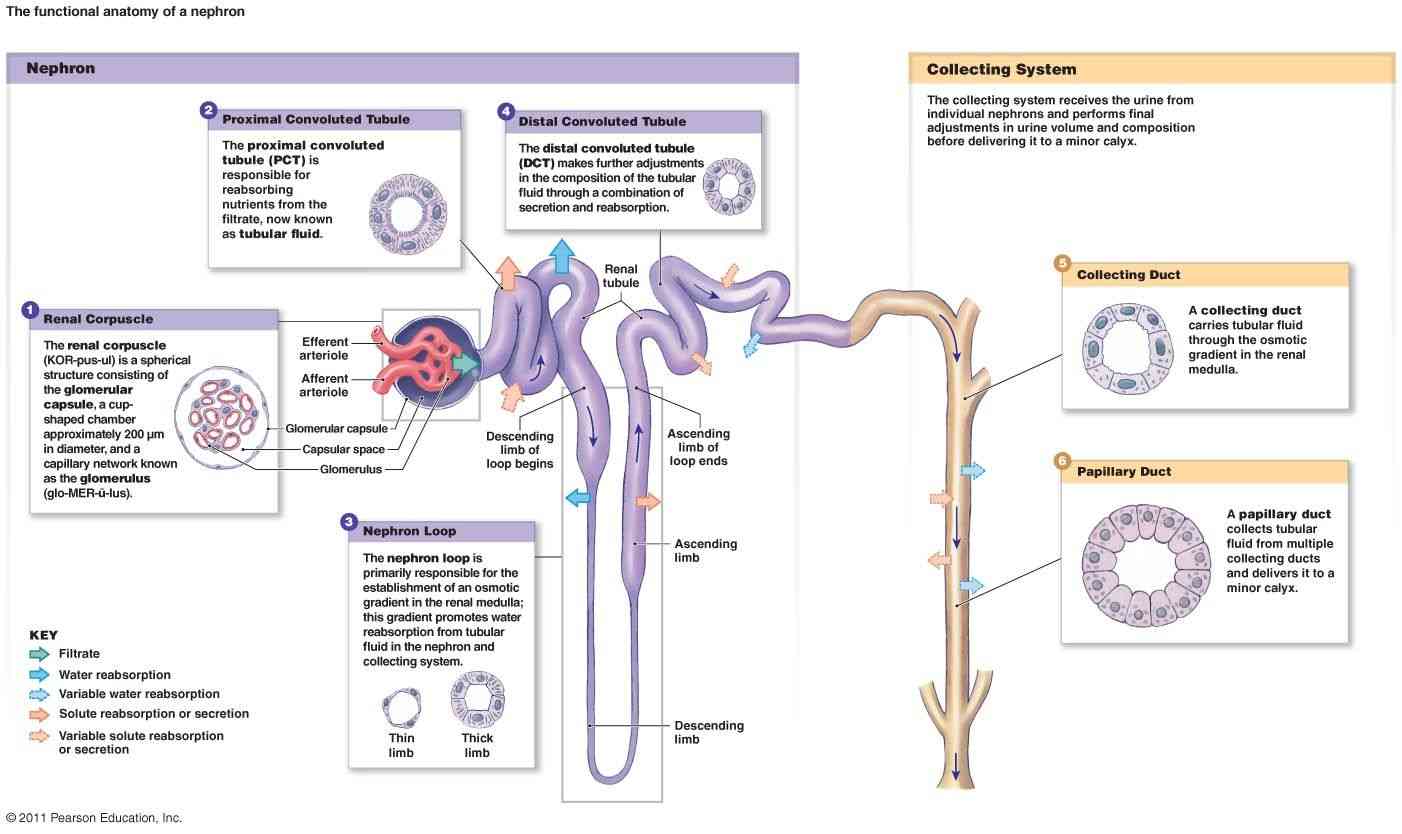The excretory organ of the human body is the kidney. Two kidneys lie at the back of the abdominal cavity, on either side of the vertebral column and the lower part of the rib-cage, attached to the back wall. They are bean-shaped and red-brown in color. The outer side of the kidney is convex and the inner side is concave, with an indentation called the hilus or hilum. The ureter and renal vein come out from the hilum and the renal artery enters the kidney.
Two ureters arise from each kidney, proceeding downwards to open into the urinary bladder. The funnel-shaped extended part(space) of the ureter is called the renal pelvis. Kidneys are enclosed with a special fibrous membrane, called the renal capsule. Adjacent to the renal capsule is the cortex, and the inner side is the medulla. These regions are composed of connective tissues and blood vessels. Generally, there are 8-12 renal pyramids in the medulla.
The apex of each pyramid is called the papilla. These papilla projects directly into the ureter. Each kidney contains a particular type of tubules called uriniferous tubules. Each uriniferous tubules has two parts, the nephron and the collecting tubule. Urine is produced in the nephron, and the collecting tubules carry urine to the pelvis.

Nephron: The functional unit and the secretory part of the uriniferous tubules of the kidney is the nephron. Each human kidney contains 1 million to 1.2 million nephrons. Each nephron consists of a renal corpuscle, or Malpighian body and renal tubule.
Each renal corpuscle is divided into two parts, the glomerulus and the Bowman’s capsule. The Bowman’s capsule encloses the glomerulus. Each Bowman’s capsule is a cup-shaped organ, composed of two epithelial layers. Inside the Bowman’s capsule is a small cluster of blood vessels called the glomerulus. Afferent arterioles from the renal artery enter the capsule and break into about 50 capillaries. These capillaries divide again and form a mass of fine capillaries. These capillaries unite together and form efferent arterioles to leave the Bowman’s capsule.
The glomerulus acts as a filter and produces filtrate from the blood. The liquid filtrate is called the ultra-filtrate. The ultra-filtrate, when passing through the tubules, repeatedly goes through absorption and excretion. Finally, the liquid filtrate that remains is urine, which moves to the ureter through the collecting tubules and,eventually, deposits to the urinary bladder, which spreads up to the tubules called renal tubules. These convoluted are behind the Bowman’s capsule.
Each renal tubules is divided into three regions, the proximal convoluted tubules, Henly’s loop, and the distal convoluted tubules.

The function of Kidney: A normal adult man expels almost 1500 milliliter urine daily. Urine contains nitrogenous waste products, such as urea, uric acid, ammonia, creatinine as well as other wastages. These are harmful to health. The kidneys play a crucial role in removingthese waste products. Each nephron of the kidney is continuously producing urine through a complicated process. This urine reaches the pelvis of the kidney through collecting tubules and proceeds through the funnel-like extended part of the pelvis and enters the ureter.
The Ureter carries urine to the urinary bladder, where it is stored. When the urinary bladder fills with urine, a sensation of needing to urinate is created and allows urine to pass out of the body through the urethra. In this way, kidneys help to expel nitrogenous waste products from the body. The Kidneys maintain the balance of mineral salts, e.g., sodium chloride, potassium chloride etc. Also, it controls blood pressure and retains the water and acid-base balance of the blood.

Source:
- Anatomy Physiology The Unity of Form and Function, Eighth Edition (KENNETH S. SALADIN)


